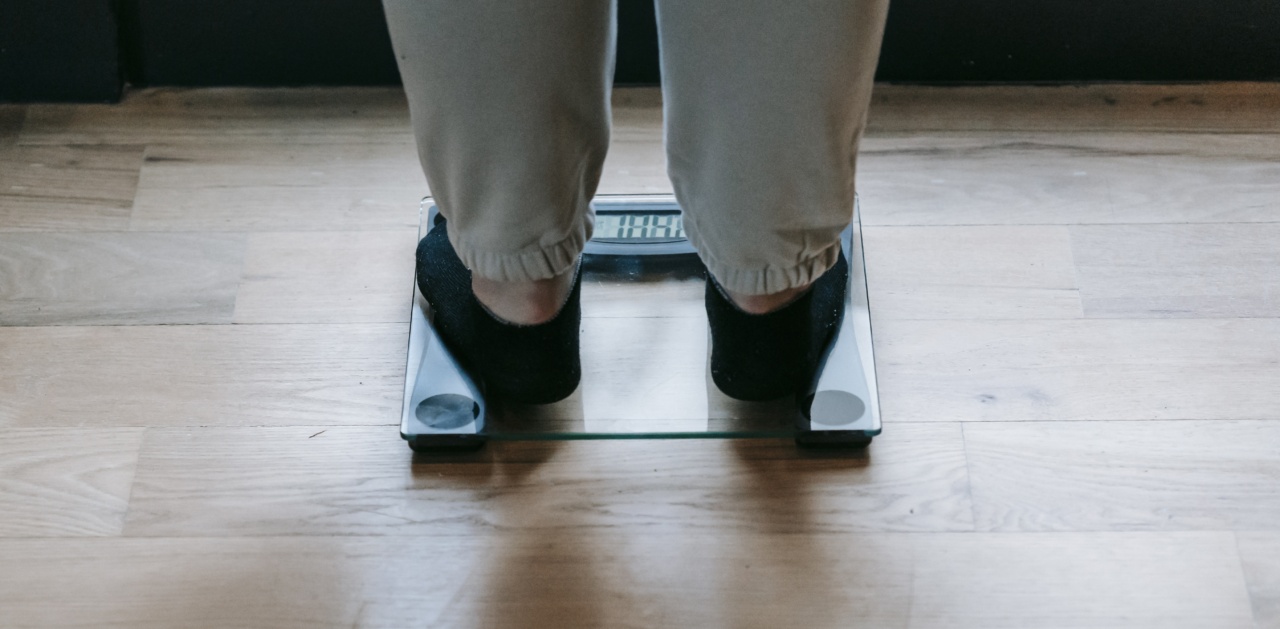Keeping track of your weight is an essential part of ensuring good health. Being underweight or overweight can lead to different health problems, so it’s crucial to monitor your weight regularly.
There are different ways to evaluate your weight, and the method you prefer will depend on your needs and the tools you have available. Here are some basic evaluation techniques to assess your weight:.
1. Body Mass Index (BMI)
The body mass index (BMI) is a simple calculation based on your weight and height. It’s widely used to determine if you’re at a healthy weight range or not. The BMI formula is:.
BMI = weight (kg) / height (m2).
Here is how to evaluate your BMI:.
- Underweight: BMI below 18.5
- Normal weight: BMI between 18.5 and 24.9
- Overweight: BMI between 25 and 29.9
- Obese: BMI above 30
You can use an online BMI calculator or a BMI chart to determine your BMI easily.
2. Waist Circumference
Waist circumference is another common measurement used to evaluate weight and health. Fat stored in the waist area (belly fat) is linked to an increased risk of heart disease, Type 2 diabetes, and other conditions.
Here’s how to measure your waist circumference:.
- Stand up straight and breathe out.
- Wrap a tape measure around your waist, just above your belly button.
- Ensure the tape measure is level and snug but not tight against your skin.
- Read the measurement in centimeters (cm).
According to the National Heart, Lung, and Blood Institute, the health risks associated with waist circumference are:.
- Men: Increased risk if the waist is over 40 inches (102 cm)
- Women: Increased risk if the waist is over 35 inches (88 cm)
3. Hip Circumference
Hip circumference is another measurement used to assess weight and health. It’s also linked to the risk of diseases. Here’s how to measure your hip circumference:.
- Stand up straight and breathe out.
- Wrap a tape measure around the widest part of your hips.
- Ensure the tape measure is level and snug but not tight against your skin.
- Read the measurement in centimeters (cm).
According to the World Health Organization (WHO), a waist-to-hip ratio of over 0.90 for men and over 0.85 for women indicates an increased risk of health problems.
4. Skinfold Thickness
Skinfold thickness measurement is commonly used to estimate body fat percentage. It’s based on the principle that fatty tissue is thicker than lean tissue. Here’s how to measure skinfold thickness:.
- Pinch a fold of skin and fat, with your fingers and thumb, from different parts of your body (like the back of your arms, the belly, or the thighs).
- Use skinfold calipers to measure the thickness of the fold in millimeters (mm).
- Record the readings for each site and use a formula to calculate your body fat percentage.
This method requires some practice and expertise to be accurate. It’s best to get help from a trained professional or a health coach.
5. Bioelectrical Impedance
Bioelectrical impedance is a quick and non-invasive method to measure body fat percentage. It works by sending a small electrical current through your body and measuring the resistance.
Fat tissue has a higher resistance than lean tissue, so the more resistance, the higher the proportion of fat. Here’s how to use a bioelectrical impedance device:.
- Make sure you’re not dehydrated or have eaten or exercised in the last hour as these factors can affect the readings.
- Remove any metal objects from your body, and avoid standing on a conductive surface (like metal).
- Step on the bioelectrical impedance device and follow the instructions for use.
- Record the readings for body fat percentage and other parameters (like muscle mass, body water, and bone mass).
Bioelectrical impedance is a useful tool to monitor changes in body composition over time. However, it’s not always accurate, and the readings can be influenced by many factors (like water retention, temperature, and body position).
6. Hydrostatic Weighing
Hydrostatic weighing (also called underwater weighing) is a method that determines body density and, from that, body fat percentage, by using the Archimedes’ principle of displacement.
It’s considered one of the most accurate ways to measure body fat percentage but requires specialized equipment and expertise. Here’s how hydrostatic weighing works:.
- You’re weighed on land to determine body weight.
- You’re put into a tank of water and asked to exhale all the air from your lungs while submerged.
- The water displaced by your body is collected and measured.
- From the water volume and the weight reading, your body density can be calculated.
- From your body density, your body fat percentage can be estimated.
Hydrostatic weighing is a highly accurate method but can be inconvenient and uncomfortable for some people. It’s mostly used for research and medical purposes.
7. Dual-Energy X-Ray Absorptiometry (DXA)
Dual-energy X-ray absorptiometry (DXA) is a medical imaging technique used to evaluate bone density but can also estimate body composition. It uses low-dose radiation to scan your body and create images of bone, fat, and muscle.
It’s considered safe and non-invasive but is expensive and requires specialized equipment. Here’s how DXA works:.
- You lie on a padded table while the DXA machine scans your body.
- The results show the distribution of body fat, muscle, and bone in different regions of your body.
- Your body fat percentage and other parameters are calculated from the scan.
DXA is a highly accurate method but is mostly used for medical purposes or research due to its cost and specialized equipment.
Conclusion
There are many ways to evaluate your weight and assess your health risks. Choosing the method that works best for you will depend on your needs, goals, and budget.
It’s best to consult with a healthcare professional or a trained coach to get accurate measurements and guidance on how to improve your health.





























